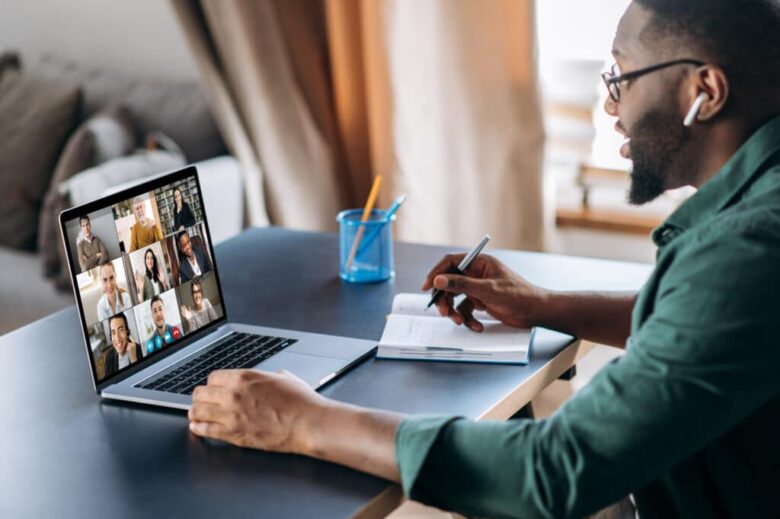Video conferencing is now an integral part of life for most of us, whether with friends and family or coworkers. A laptop equipped with high-quality cameras and audio is key for an effortless video calling experience.
This model is an excellent option for video meetings and beyond, featuring an impressive processor, solid audio system, FHD camera and 3K screen – all impressive features that set this device apart from its competition.
High-Quality Built-In Cameras
Image quality in video calls is as essential to their success as audio quality; that is why the best laptops for video conferencing boast high-quality built-in cameras with wide field of view, high resolution and fast frame rate capabilities to produce smoother video on both ends of a call.
The MacBook Pro’s camera excelled in our test, providing excellent face exposure and exceptional detail. However, its cost compared to other laptops in its class makes it prohibitive.
One factor affecting video call quality is a camera’s dynamic range, which measures its ability to handle extreme variations between bright and dark elements of a scene. A higher dynamic range makes it easier for cameras to capture details in low-light conditions that are common among home office setups.
A great camera requires high resolution, ideally recording 1080p video at least. This should meet business laptop standards; for high-quality videos it may be worthwhile upgrading to 4K or even 8K if budget allows it. An external webcam with two or more microphones can further improve audio quality by isolating voice from ambient noise and improving its audio output.
Superior Audio
For video calls to be productive and engaging, they must have outstanding audio quality. This requires the laptop capturing and reproducing voices accurately (around or in front of it for multi-person calls, respectively) while its built-in speakers deliver clear sound without distortion.
An ideal laptop for video conferencing must come equipped with high-quality built-in microphones that reduce background noise and make it easier to hear colleagues. You may also consider choosing one with an anti-glare screen to avoid distractions during meetings.
Choose a laptop with a high-resolution display to ensure you can clearly see other participants, especially during screen sharing sessions. In particular, aim for at least Full HD (1920×1080).
Before making your selection, take into account both processing power and random-access memory (RAM). For optimal video streaming and multitasking performance, opt for a device equipped with either an Intel Core i5 or AMD Ryzen processor and at least 8GB of RAM.
The Dell Inspiron 16 offers an excellent combination of features for virtual meetings and beyond, including high-resolution audio that supports Dolby Atmos, FHD webcam, impressive battery life, flexible configuration options, and ample connectivity options – it even supports Dolby Atmos! However, its only major flaw lies in needing more memory and faster processor.
High-Resolution Screen
No matter who or where you’re using video calling on your laptop, having a high-resolution display screen is an essential feature. A high-resolution screen makes reading text, viewing presentations, and communicating with call participants much simpler.
An excellent screen is also essential to making sure that your voice can be clearly heard during video calls. Look for a laptop equipped with at least Full HD display for crisp visuals that are easy to read; higher resolution may also be beneficial if using your laptop for content creation, gaming or other graphics-intensive activities.
Your laptop must also feature ample RAM memory to support all of the applications that could potentially open during a video conference, otherwise its performance may lag and cause visual errors that are distracting for all involved parties. Without enough RAM memory, meetings could potentially slow down significantly and result in visual errors which can become visually distracting and cause visual errors that make participants unhappy with what is taking place on screen.
If you plan on regularly using your laptop for video conferences, consider purchasing one with 8 GB or more of RAM. This is particularly important if you intend to run multiple applications simultaneously and open many browser tabs at the same time. Ideally, 16GB should provide more than enough room to handle even the most demanding apps.
Reliable Internet Connection
As video conferencing becomes ever more prevalent, having a reliable Internet connection has become ever more essential. To achieve optimal results and call quality, hardwired Ethernet connections may provide superior results by limiting competing applications or devices from accessing bandwidth on a WiFi network; this can improve overall performance as well as call quality.
One important feature to keep in mind when purchasing a laptop for video conferencing applications is how much RAM (memory) it has. While video conferencing apps don’t typically need powerful processors, having plenty of available RAM will help ensure smooth and uninterrupted calls. Also make sure that there’s ample storage space on your computer so you can record calls locally if desired.
Finally, it’s important to consider your laptop’s display quality. A high-resolution screen makes reading text and viewing details during a call easier while helping ensure participants clearly hear and understand you during a meeting.
No matter if you need it for professional video conferences or just personal video chat, there’s an available laptop model to suit your needs. Look for one with high-quality built-in camera, superior audio, and reliable Internet connection for optimal video conference experiences. Adding an external webcam may further enhance this experience and your calls.




